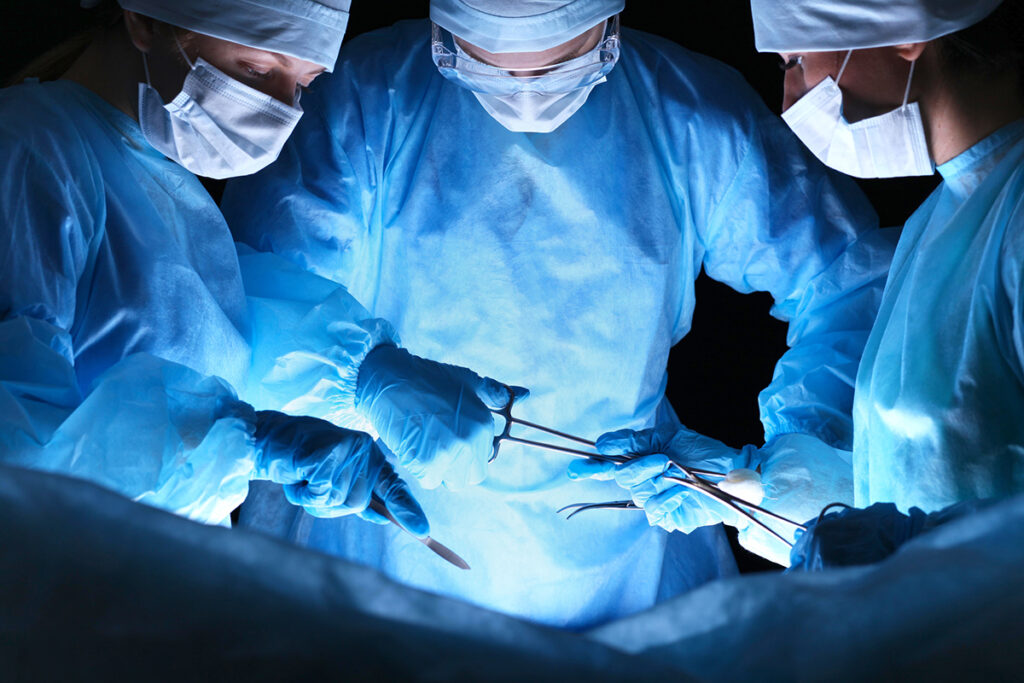Will this require a cast or will my child need surgery?
That may be the first question that a parent has when their child fractures a bone. The answer is based on several factors that pediatric orthopedists consider when planning a course of treatment.
The good news is a child’s healing response is far more rapid than that of an adult. That means the vast majority of pediatric fractures – 90% or more — can be successfully treated without surgery.
Factors in forming a treatment plan for pediatric fractures
- Children’s fractures are typically not as “displaced”(i.e., the bone’s pieces are moved out of place) or “comminuted” (i.e., the bone is broken into more than two pieces) as compared to adults. Children have a “lining” around their bones called the “periosteum” that helps stabilize the fracture and restrain the displacement.
- Children can regain their strength and motion more quickly than an adult can after a cast or splint is removed. Compared to adults, children usually do not need physical therapy to regain their full function following most fractures. Kids have the ability to “remodel” the fracture, meaning that when the fracture is displaced or the bone is deformed from the injury, the body has a “process” to help the bone restore its normal anatomical shape as it heals. Although remodeling is dependent on a variety of factors, it is essential to consider in our treatment decision making.
- The most important factor affecting remodeling capacity is the child’s age. For example, a baby or toddler with a displaced femur (thigh) fracture will only rarely require surgery to place a rod or implant to “fix” the fracture, although, they may need a procedure under anesthesia to put on a “body” cast. Whereas, a teenager with a femur fracture will likely require surgery to “fix” the fracture with a rod or other implant.
- Other factors that affect remodeling potential include the fracture location within the bone, the relationship to the joint, and the degree and direction of the deformity. These are all considered by the orthopedist to aid in determining the optimal course of treatment. If the fracture is displaced or the bone is healing “crooked,” but the orthopedist determines that the bone will ultimately remodel to its normal alignment, then surgery or a procedure under anesthesia to “set” the bone can be avoided in most cases.
Orthopedic Surgery for Pediatric Fractures
In general, we are doing more surgery on our pediatric fractures than a few decades ago. One of the main reasons for this is that orthopedic surgery can dramatically expedite the healing and recovery process of a child’s fracture as compared to nonsurgical treatment. Surgical treatment usually allows kids to ambulate quicker, return to school earlier, and resume sports sooner.
Consider the child with a long leg cast; he or she will need help getting around the home, school, even bathing or sitting in a chair. Remember those images from old movies of a child in a hospital bed with their leg in traction? A fractured femur would mean two to three months of being in traction in a hospital bed. That can be very difficult for any patient, let alone a child . . . not to mention, the family and missed school. Nowadays, the same femur fracture treated with surgery, using implants specifically designed for children, would usually allow the child to go home in a few days and likely start walking right away.
But surgery has its place in a treatment plan for other reasons, too.
- Once in a while, a child’s fracture worsens in alignment during the healing process. Then, we may have to perform surgery to realign the fracture and fix it with a rod or plate so that the fracture won’t displace.
- If we believe the deformity due to a fracture will not predictably remodel or remodel at all, surgery would be the recommended treatment.
- There are some fractures in children that heal very slowly or are prone to heal unreliably. These are usually fractures that involve the joint, such as the knee or elbow. These fractures may need surgery to achieve the best outcome.
- In the case of an open wound with a fracture (as when the bone comes through the skin), we will perform surgery to minimize the chance for infection.
- If there is damage to the child’s nerves or blood vessels surrounding the injury, those injuries are usually best treated if we can surgically stabilize the underlying fracture.
- Fractures that involve the joint’s surface may require surgery to ensure that the joints are perfectly aligned to reduce the risk of developing early arthritis.
Although parents often worry about the prospects of a surgical procedure, they should keep in mind that avoiding surgery in the short term may ultimately lead to a more extensive procedure later. It is important that the child be seen right away by a pediatric orthopedist to determine the best course of treatment for the injury and to obtain the best outcomes for that child’s long road ahead into adulthood (and, we hope, no more broken bones).




